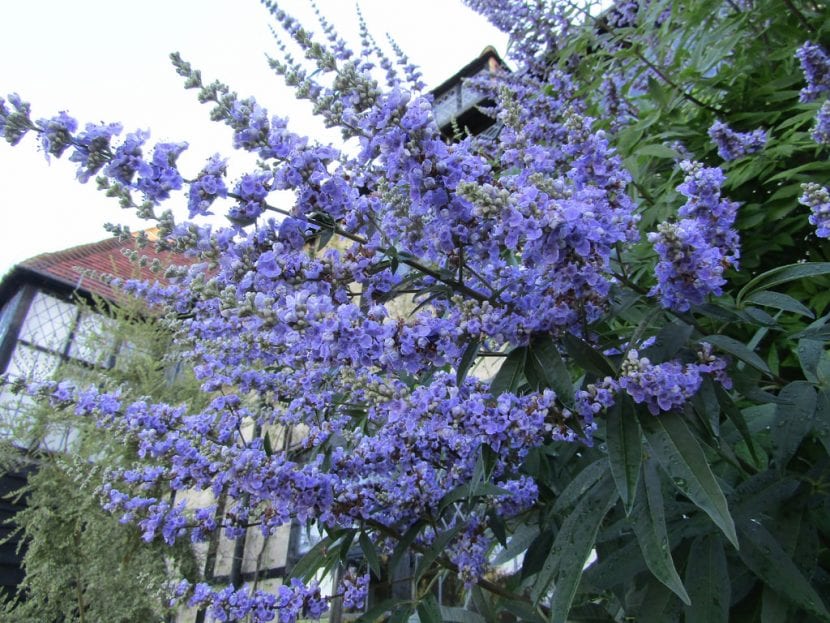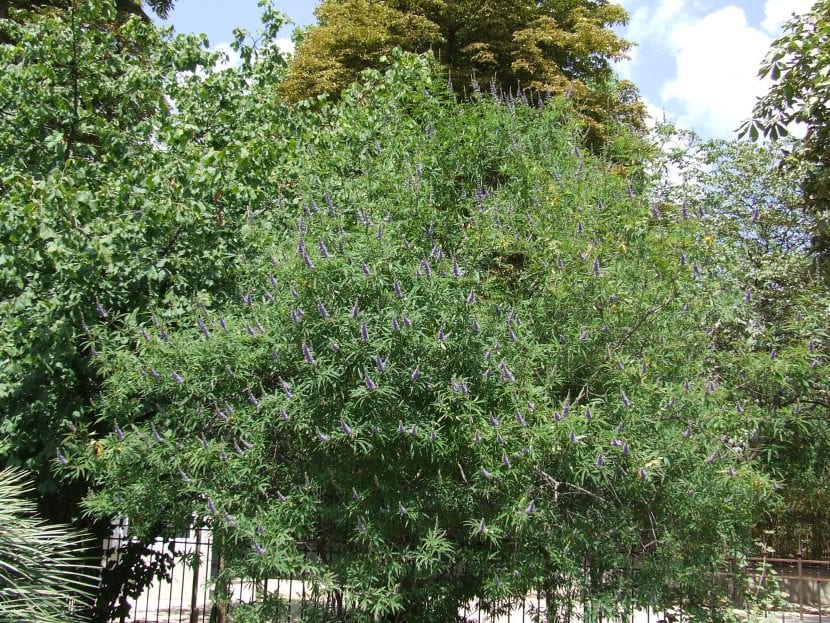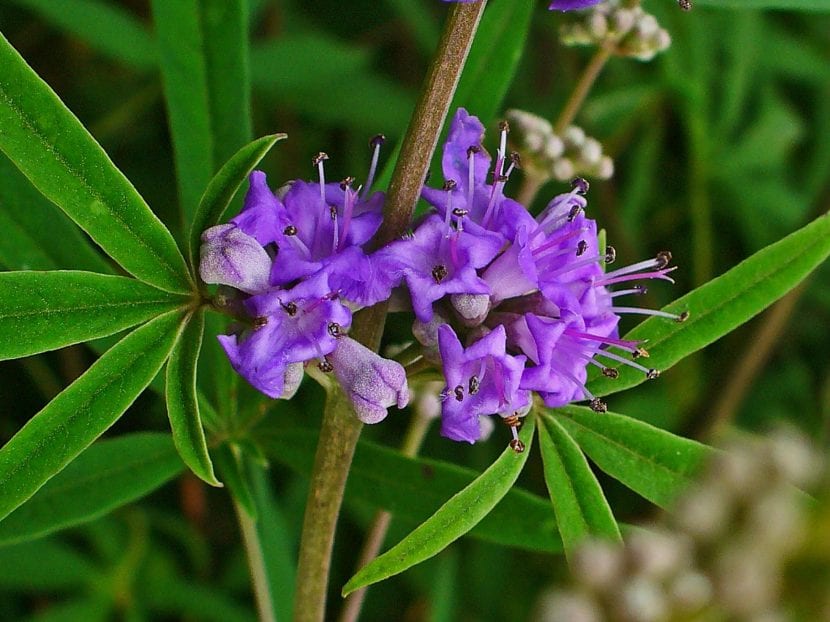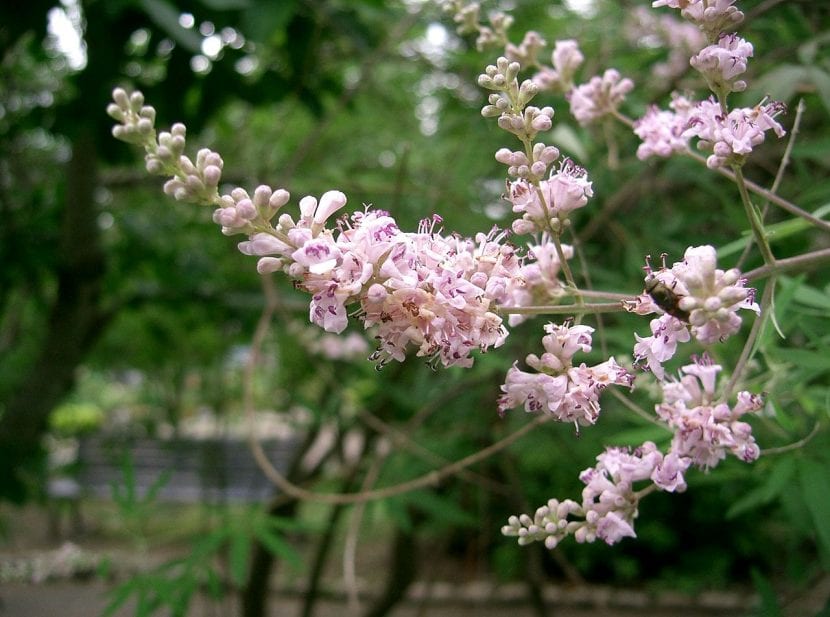
If there is a shrub or small tree that produces a large number of flowers without the need for much care, that is the Vitex agnus-castus. With a maximum height of five meters, it is perfect to use as a hedge, isolated specimen or even to grow in a pot.
It looks great in any corner, and that ... that's amazing 🙂. Do you want to know it more in depth?
Characteristics of the Vitex agnus-castus

Our protagonist is a shrub or small tree native to the Mediterranean known by the common names vitex, chaste tree, monks pepper, chasteberry or trigger willow, and by the scientist Vitex agnus-castus, It grows naturally on the banks of rivers, reaching a height of 5 meters.
Its crown is highly branched and very dense, formed by fingering leaves composed of 5-7 lanceolate green leaflets. The flowers appear in terminal clusters, and are blue or pink in color. Once they are pollinated, the fruit begins to ripen, which is small, round and black in color.
How do you take care of yourself?
If you want to have a copy in your home, write down these tips:
Location
El Vitex agnus-castus must be placed outside, in full sun. It can also be in semi-shade, but it is important that the area where it is located is bright, since it does not grow well in shady places.
Soil or substrate
Es indifferent, but it is important that you have a good sewer system, especially if you want to grow in a pot. In the event that it is not, it can be mixed with perlite, clay balls, river sand, or the like to minimize the risk of root rot.
Irrigation
The frequency of watering will vary depending on whether it is in the soil or potted and the climate, but generally It should be watered 2-3 times a week in summer and 2 / week the rest of the year.
Subscriber
From spring to the end of summer it is highly recommended to pay with organic fertilizersas guano o earthworm humus. In the case of being on land, you can use powdered fertilizers, but if it is in a pot it will be better to use the liquids so as not to hinder the drainage of the water.
If you live in an area with a mild climate, without frosts or very mild (down to -2ºC), you can also pay in autumn.
Planting or transplanting time
The best time to spend it in the garden or a larger pot is late winter, when temperatures begin to rise above 15ºC.
Pruning
It has to be pruned in spring, eliminating the dry, diseased or weak branches and those that have grown too much.
Multiplication
If you want to have new copies, you can sow your seeds directly in the seedbed with coconut fiber in spring. The germination time is a month-month and a half.
Plagues and diseases
Es very resistant. The only problem you might have is that your roots rot from excess moisture.
Rusticity
Withstands the cold until -4ºC.
Uses and properties of Vitex agnus-castus

This beautiful plant has many and varied uses, which are:
Ornamental
As we mentioned before, it is a very interesting garden plant that also can be used to decorate patios, terraces and even balconies if it is pruned regularly. Its beautiful and fragrant flowers are very decorative, as well as the shape of its leaves, so rare.
Medicinal
When talking about Vitex agnus-castus we have to talk, obviously, about its medicinal properties. Women with PMS disorders can use it as an ally to reduce pain and discomfort accompanying this problem.
Although it is not well known how it works, it has been found that it decreases the hormone known as prolactin, which influences estrogen levels in women, and also testosterone levels in men.
Thus, can be used in any of these cases:
- Polycystic ovarian syndrome (PCOS)
- Premenstrual syndrome
- Uterine fibroid
- Menopause
- Infertility
Its properties are:
- Leaves: aromatic, vermifuge, analgesic, antiparasitic.
- Roots: tonic, febrifuge, expectorant, diuretic.
- Fruits: they are emmenagogues, that is, they stimulate blood flow in the area of the pelvis and uterus.
How is it used?
To be able to take advantage of it cut off the last ten centimeters of the upper leaves and stems, or mature flowers and seeds. Then, you can decorate them, prepare tinctures, syrups, elixirs or, simply, you can consume them directly.
Are there any contraindications?
It is not recommended to follow a treatment with this plant during pregnancyas complications could arise. Gastrointestinal pain or discomfort and mild, itchy rashes may also be experienced, although it is rare.
Also, always, when in doubt, you have to consult a doctorWell, even if it is a harmless, non-toxic plant, each body is a world and what can work for you, another person can feel bad.

And with this we are done. What did you think of this plant? Do you dare to have one in your patio or garden?